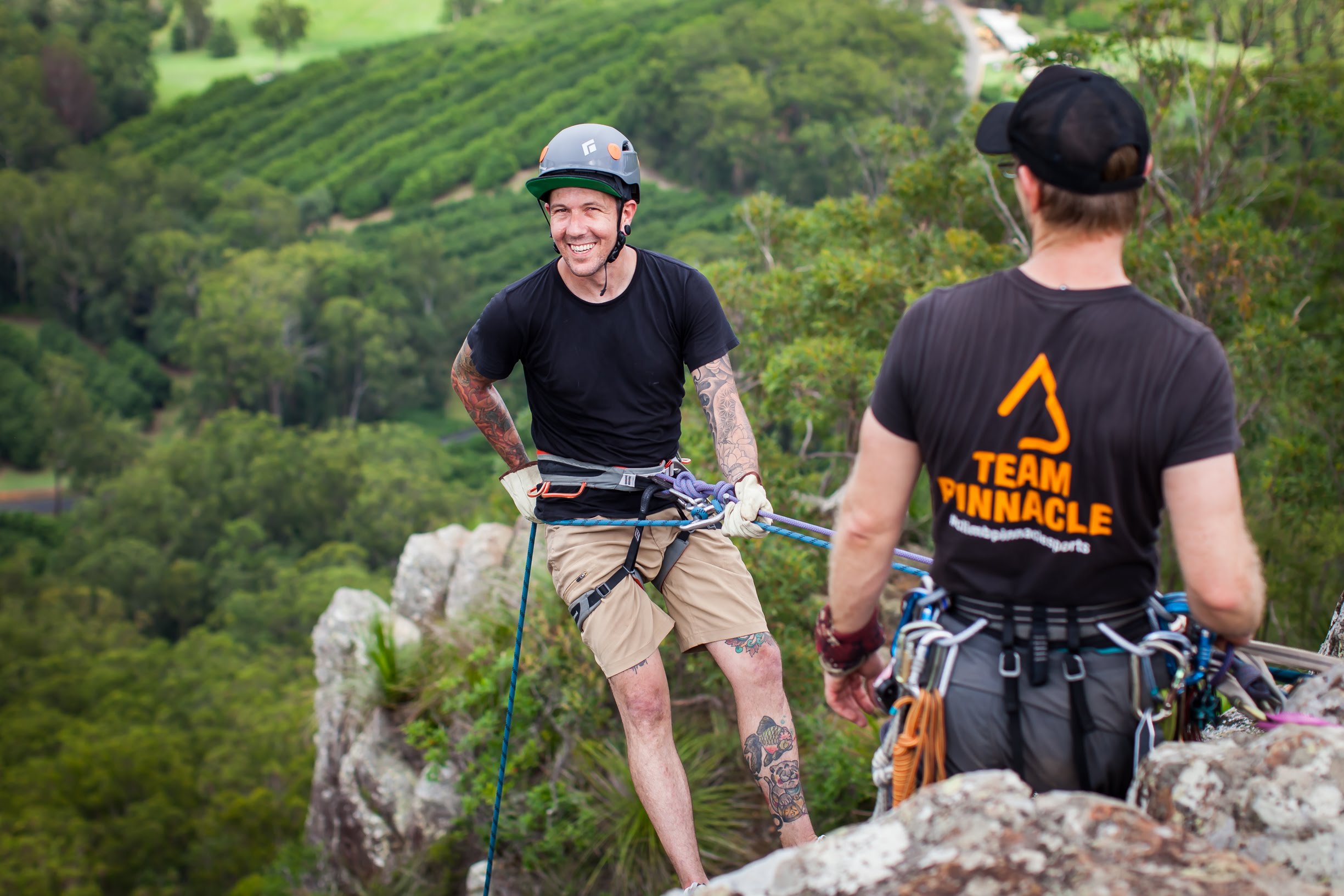 Written by Team Pinnacle's Manny More
Written by Team Pinnacle's Manny More
Since we are entering into the new year, it is a great opportunity for us all to give our trusty gear some much-needed love. If you are anything like me, you've really put your gear through the wringer over the holidays. Your gear would appreciate the same love and care you gave to your family and friends this season. It might save your life.
Why?
Damage to climbing equipment isn't always apparent. If you have ever climbed at Coolum or Flinders Cave, you would know about the damage the perma-draws take just from weathering, let alone the amount of whips climbers have taken on them. The gear seems safe to use until it snaps! It's important to inspect your gear regularly to make sure you can trust it when you are out, pushing your limits. It needs a service the same way your car needs it to keep giving you the same performance over the years. Remember - while plastic and textile products can have a lifespan of up to ten years from date of manufacture, regularity and intensity of use will shorten this, and an unusual event (think sharp edges, aggressive environments, chemicals) may even require you to retire a product after only one use. Never assume your gear is OK based on age - get stuck in and inspect it.

Essentials
Harness - Your harness is one of the most important pieces of equipment you use and I can bet my bottom dollar you have yet to clean it. Just think about the amount of whips it's caught over the years you've used it. You wouldn't neglect your car like that, so why not do the same for your harness?
Some harnesses have a handy wear indicator on the belay loop that lets you know when it's time to turn your climbing harness into a weight belt for training. It's important to check the whole harness over - including the bits hidden behind buckles. Petzl offers a
really great overview of what to look for. If your harness still has some life left to it, it's good practice to give it a good old wash. Brands like Skylotec and Beal offer
rope washes that can also be used for cleaning your harnesses. If using your own soap, ensure it is a mild pH neutral one, and always follow manufacturer's guidelines.
Climbing Rope - Your climbing rope needs a thorough end-to-end inspection - ideally before and after any long climbing session. The easiest way to do this is to run the rope through your fingers and pause at any sections that feel "odd" or are showing signs of sheath wear. A little sheath damage on it's own is not a big deal (as long as the core isn't exposed) - but it can indicate damage to the core underneath, which is definite cause for concern. To inspect the core, pinch the rope between your thumb and forefinger; if a little space remains it's OK, if it collapses on itself, this section is damaged and needs to be removed. Ropes are most often damaged or "core shot" on the ends where climbers tie in. Make sure to measure your rope and remark the middle after any cutting. If you need a hand cutting and measuring your rope, pop into
our retail store at West End - we offer this service for free! Once your rope is good to go, it's worth giving your rope a good clean before you climb on it again. Here's a
handy video to guide you through the proper method of cleaning your rope.
Clean your hardware - Any piece of gear that has your rope running through it needs cleaning. Devices like
Petzl GriGri are known to collect grime with use. Open up your device and see how it's looking inside!. The easiest way to clean most belay devices and carabiners is by washing them in a pot of lukewarm water (max 30°C) with pH neutral soap, and cleaning the grooves with an old toothbrush or other soft brush, before rinsing them thoroughly with fresh cold tap water. While cleaning, make sure to give all surfaces a thorough feel for any irregularities, e.g. sharp points or excessive wear, as well as checking the the gate action and locking mechanism on your carabiners.
Spring Loaded Camming Devices (Active Protection/Cams) - Any device that has moving parts, eventually gets dirt stuck into it causing it to jam or get stuck in a position. To service your cam you need a pot of water, an old toothbrush, some pH neutral soap and some cam lube. Brush all the obvious dirt out of the springs and working parts of the cams. Submerge the cam in water and pull the trigger repeatedly. Repeat these steps until the cams start to feel smoother. Hang the cams up to dry thoroughly in a well ventilated room, away from direct UV exposure or heat sources. Why not take the time to inspect the slings as well? Once the cams are fully dry, apply the lubricant to the moving parts of the cam. Try not to use too much and be careful to avoid getting any lube on the slings. Wipe off any excess lube once done.
Climbing Shoes - This is an easier task compared to the rest. If you find that stepping on smaller foot-holds is getting more and more challenging, there is a chance your shoes need a resole. If you haven't got a hole in your shoes already, you may notice the sole of your shoes is receding further away from the rand. A good indicator of wear is pressing your fingers into the rand of your shoes. If you find that some sections are squishier than others, it's time to give those shoes a rest and send them off to a re-soler. There are a few re-sole services in Australia like Big John Retreads (Blackheath), and Arapiles Resoles (Natimuk). We prefer going local to
Scotty Dog Resoles for all our resole needs.
Now that you have checked your gear, it's ready to head out on another adventure. Be sure to repeat these inspections and TLC regularly to keep yourself safe out there. In between adventures, make sure your gear is taken out of your crag pack and stored in a well-ventilated room away from direct UV exposure, heat sources, or chemicals.
This is also a good time to organise your gear and create a gear log. Marking your metal gear with some nail polish or rack tags is handy when you show up to the crag and there are several others with the same gear as yours. A gear log is handy for when you need to remember which piece of gear has had the most use and the least service. A simple Excel sheet or an old-school pen and book would do the trick.
Remember, folks – climbing is dangerous! The above information should not be considered a definitive work, but rather an overview. Mistakes and omissions are possible, and the use of the information contained in this document does not imply responsibility to the author for death, injury or harm that may result. Always refer to the manufacturer’s instructions for the correct care and use of your equipment.
Looking for more great reads? Subscribe to our newsletter to stay up to date with the latest climbing tech, crag recommendations and upcoming events.








